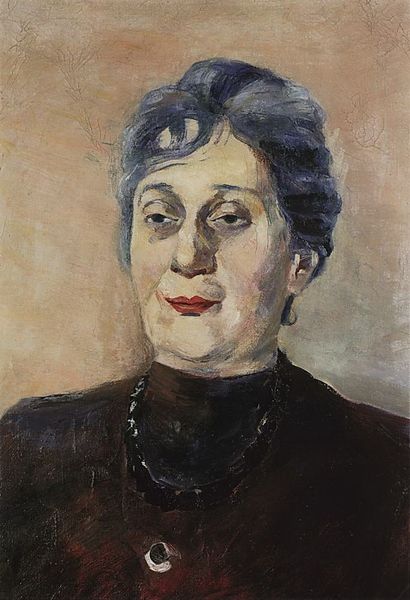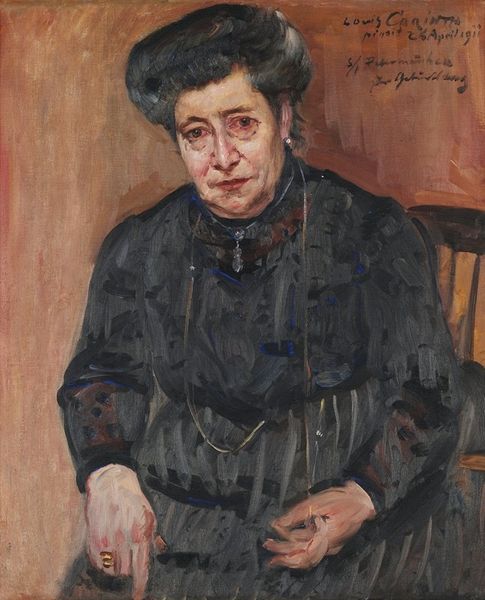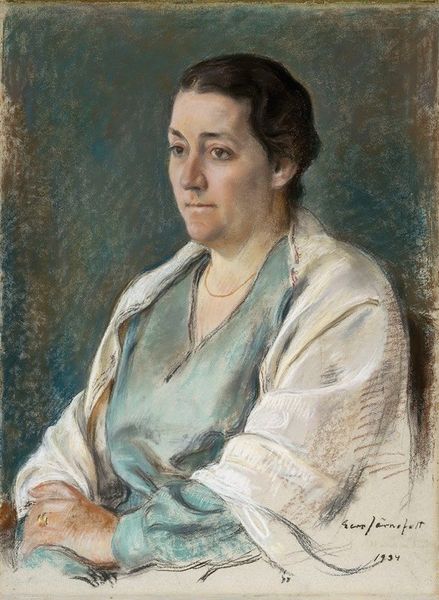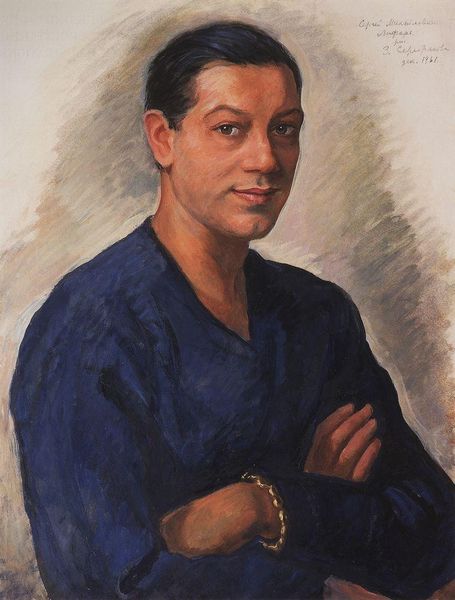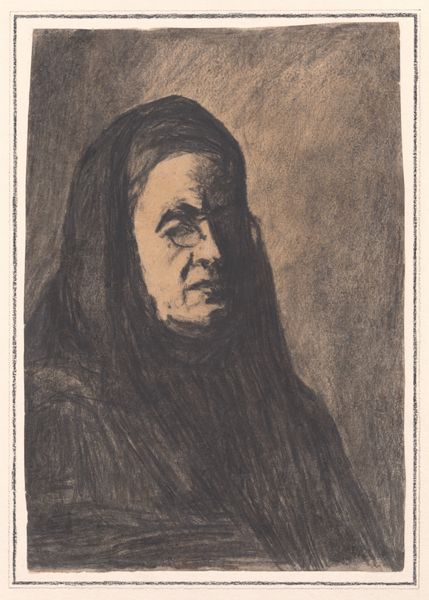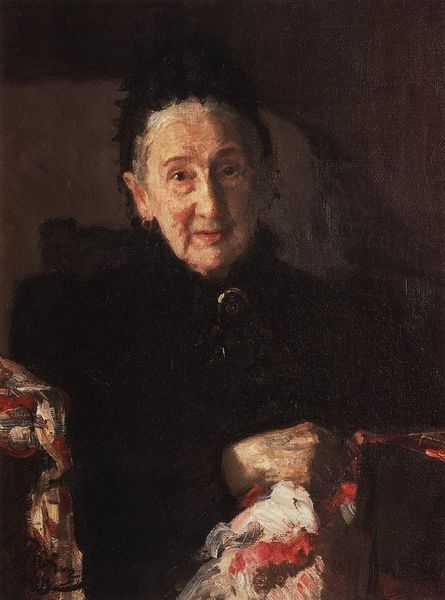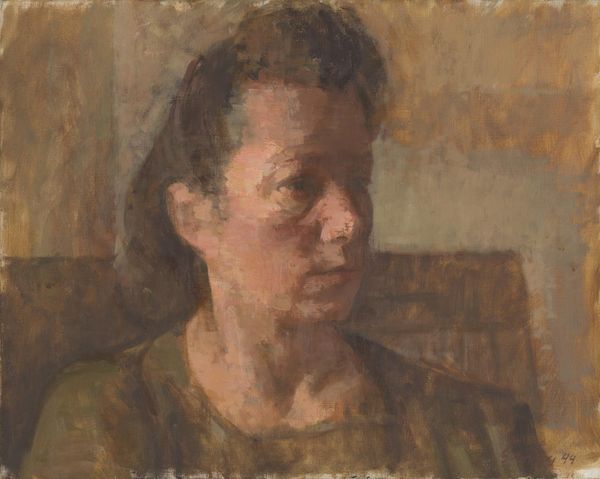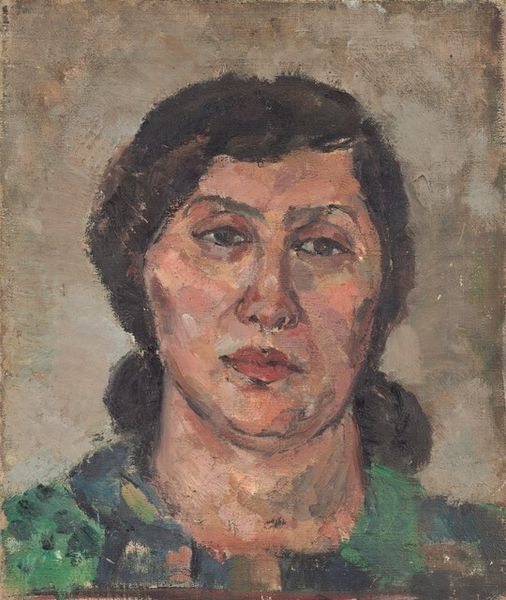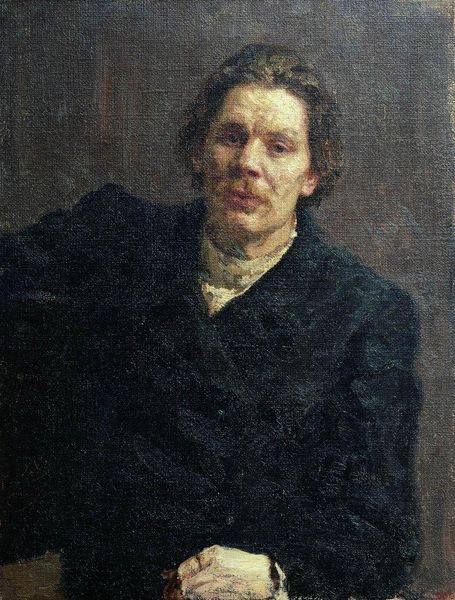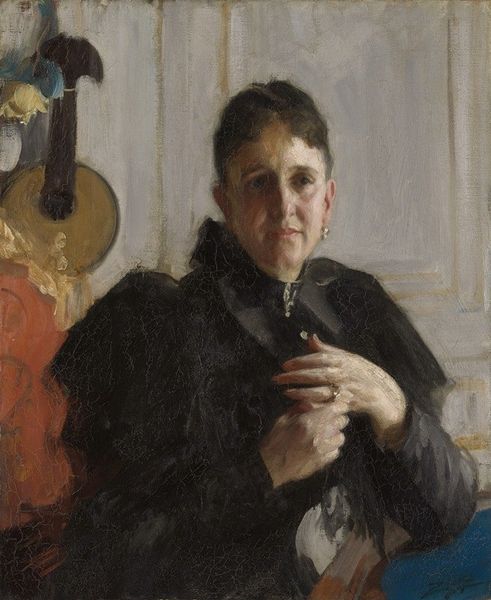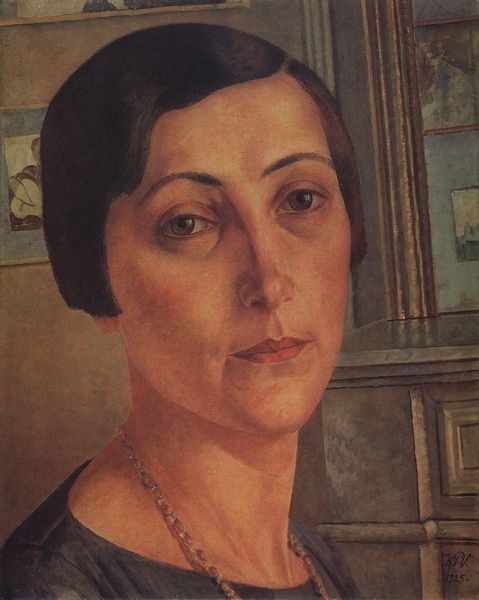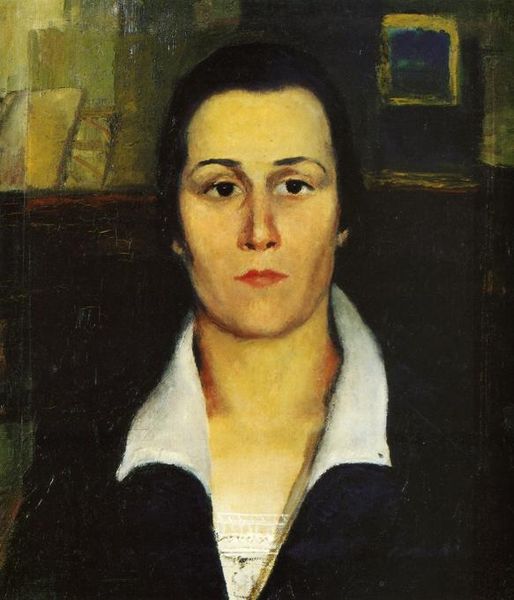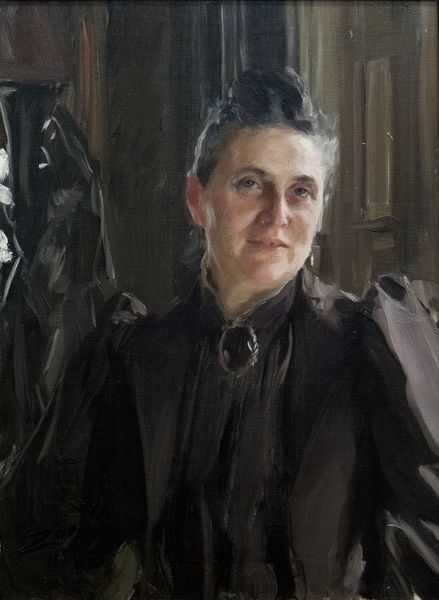
painting, oil-paint
#
portrait
#
painting
#
oil-paint
#
oil painting
#
genre-painting
#
realism
Copyright: Vilen Barsky,Fair Use
Editor: We are looking at “Aunt Rachel,” an oil on canvas portrait from 1950 by Vilen Barsky. The first thing that strikes me is the woman’s gaze; it feels very direct, honest, and slightly melancholic. What can you tell us about it? Curator: Well, beyond her immediate presence, what does that dark dress evoke? The somber tones coupled with the intimacy of a family portrait hint at memory and perhaps mourning, as it reminds of the artistic canon of mother-and-child devotional portraits. Does she look iconic to you? Editor: I hadn’t thought of it that way, but yes, there's definitely a timeless quality to her expression. I am curious: do you see any specific cultural markers or references in her features? Curator: Note the simple setting and the lack of ostentation in her clothing. Consider post-war austerity. She is a symbolic figure, carrying echoes of resilience and perhaps representing a generation marked by hardship and endurance. What do you read into that subtle expression? Editor: It does have some gravity, now that you mention it. Is that realism indicative of the time period or perhaps representative of Russian art from the era? Curator: Precisely! It resonates with the Socialist Realism movement, focusing on the everyday experiences and values of ordinary people. How has considering her through symbolic and cultural lenses changed your initial interpretation? Editor: It shifted from a simple portrait of an individual to a depiction of something broader; it became almost like a symbolic representation of resilience. It shows how understanding the cultural and historical context can give us a deeper appreciation of a painting. Curator: Agreed. Visual symbols allow us to transcend time, so the canvas isn't just a picture, but a chapter in collective memory.
Comments
No comments
Be the first to comment and join the conversation on the ultimate creative platform.
